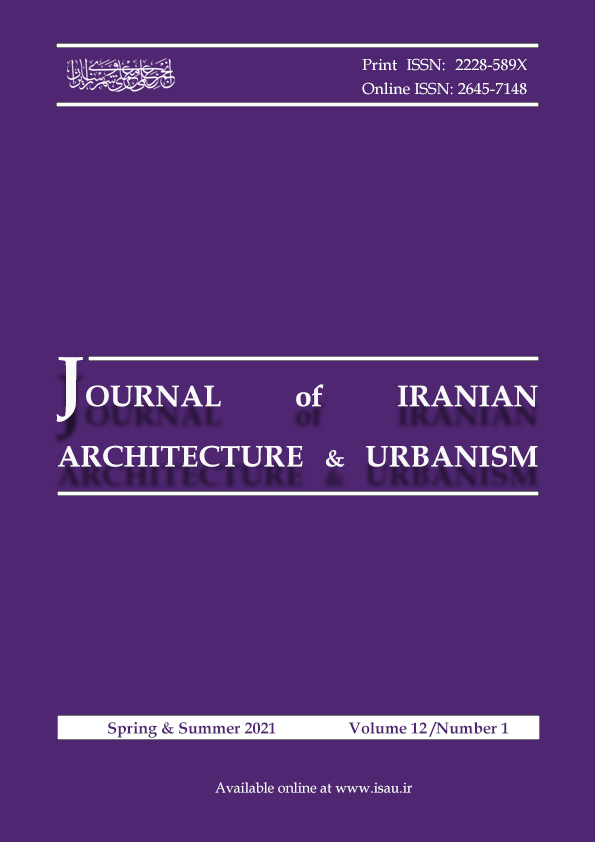Document Type : Original Research Paper
Author
Assistant Professor, Department of Architecture, Isfahan (khorasgan) Branch, Islamic Azad University , Isfahan, Iran.
Abstract
Extended Abstract
Background and Objectives: In the architectural and physical design of many schools and other educational spaces within the country, the psychological aspects of students and space users are highly neglected. However, these spaces and environments have the highest level of contact with children and teenagers, thus bearing long-term psychological and emotional effects on them. According to experts in the field, the school's educational environment should be designed so as to make learning easy and enjoyable. The ever-growing need to expand educational spaces along with the increased student population and the weakness of open spaces, and lack of suitable green environment in schools, is one of the main problems of today's society. In the meantime, the design of green space in these environments and the way of organizing the elements and integrating the occupied empty spaces with the desired capacity in the school space, both the interiors and exteriors such as courtyards, should be more flexible so that it can yield positive results in the teaching process. The arrangement of the elements together can create different-looking courtyards with various capabilities for relaxation and rest, exercise and the exploitation of green space, just as children and teenagers want a plethora of green spaces with different functions in school. Establishing a close and direct connection with the environment and outdoor nature makes the school a manifestation of the student's second home and at the same time. When space is in direct and close contact with such courtyard, it is possible to use both spaces simultaneously for both functions of learning or leisure. The purpose of this study is to investigate the desirable design of open spaces and outdoor educational environment at all educational levels, as shaping a sense of interest towards the educational environment and the subsequent interaction with green spaces and roaming space of the yard are highly contributing factors in the desirable attitude of students towards their learning environment and their resulting educational progress. The desirability of such spaces is also very effective in reducing the stress of the teaching staff and educators, thus forming constructive steps in the process of education and training.
Methods: The research method in this paper is qualitative that employs descriptive (retrospective causal-comparative) indicators. The statistical population of this research includes all-girls high schools in Isfahan. According to the standards offered by the General Directorate of School Renovation of Isfahan Province, the schools of the four educational districts were divided into two groups of desirable and undesirable. In this research, a simple random sampling method was used to select subjects. Hence, 208 students from both school types (desirable and undesirable) were examined. Then, four high schools (one school from each district) were randomly selected from the list of schools. Two classrooms were subsequently randomly selected from each school. From each class, all students responded to the questionnaire items. In addition, students from both groups of desirable and undesirable schools were homogenized and compared in terms of intelligence quotient, education level of parents, economic and social status of the family, and lack of inflicting disorders. This self-report inventory consists of 32 Likert-scale items and is designed to examine attitudes of students toward educational spaces and the perception of the open environment and green space. In developing this questionnaire, a prototype questionnaire (preliminary design of the design scale) was used. The Cronbach's alpha coefficient for this inventory was estimated to be higher than 0.7, and the reliability of the data was thus confirmed.
Findings: The results show that there is a significant difference between the average scores of the open space design of the yard and the green environment of the school from the students' point of view in two groups of schools. As such, the students studying at desired schools had a positive attitude towards the school and the educational environment in terms of exploiting the open spaces according to the students' psychological characteristics. The learning process in interaction with the open space, owing to the formation of gathering spaces, provides the possibility of group work practice and higher student participation.
Conclusion: Overall, this collective learning and the relationship between the internal body and the external space positively affect students' intellectual activity. Also in consolidating the sense of place, this study explores the concepts of socialization and interpersonal interactions of students, learning and attractiveness of learning and promoting indirect education in the interaction between open and closed spaces (as well as the connecting semi-open spaces), softening the environment and appropriate landscaping and positive psychological effects of students and creating thermally comfortable seating space to be used in the outdoor environment, controlling the reflection of disturbing lights and sheltering rain or other climatic conditions in certain environments, strengthening students' sensory and visual communication with the environment and educational-oriented communication in the open environment and providing space for relation, rest, interpersonal interactions, observing others and creating creativity through research strategies and achievements, which requires appropriate design and careful application of the principles of architecture and environmental psychology.
Graphical Abstract
Highlights
Keywords


